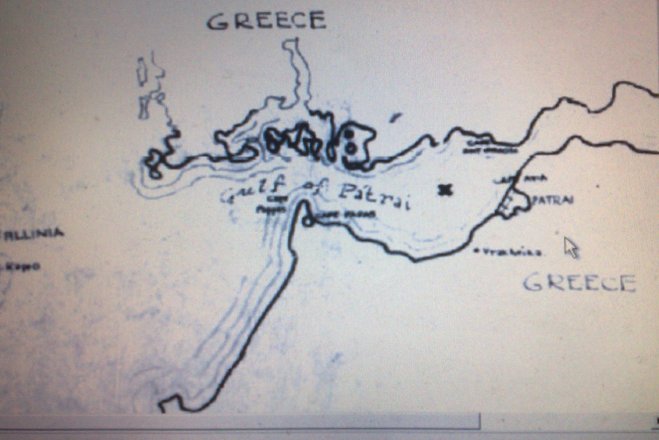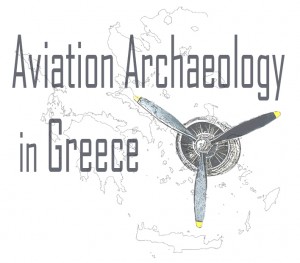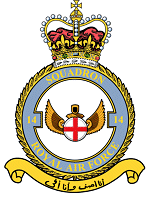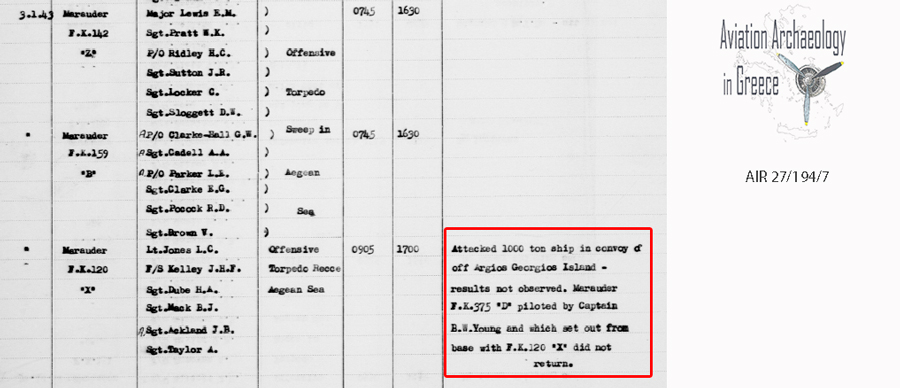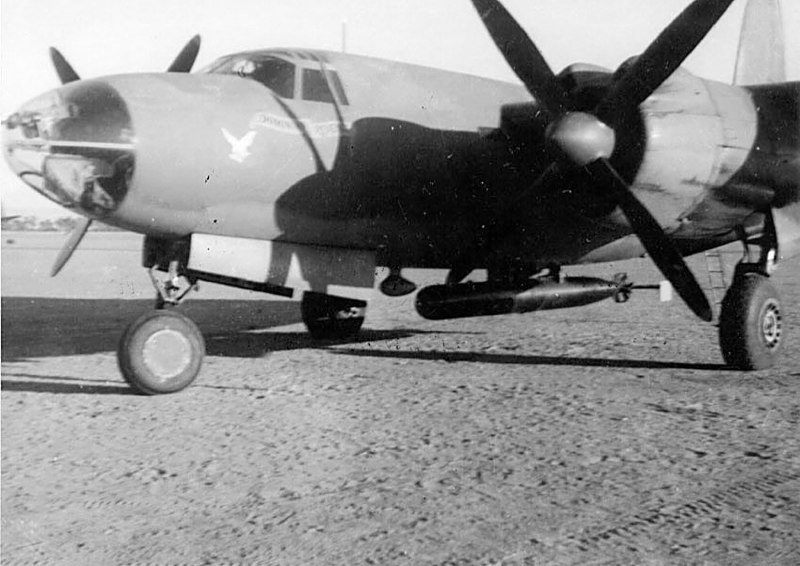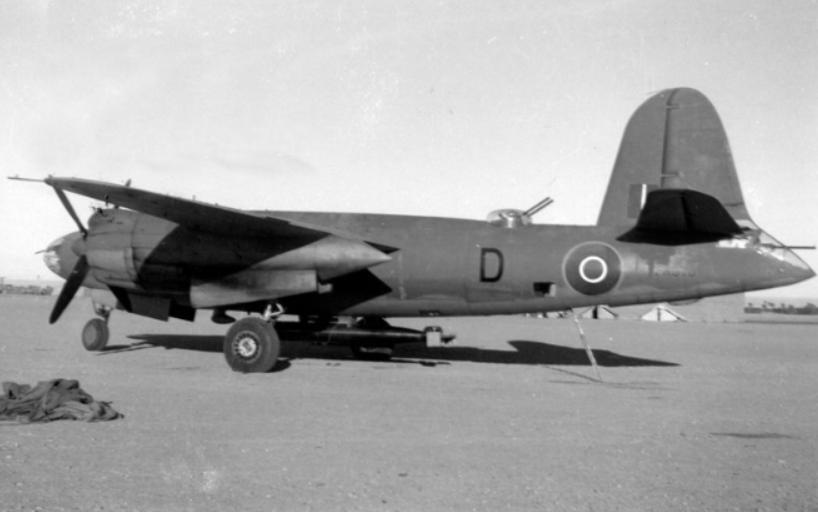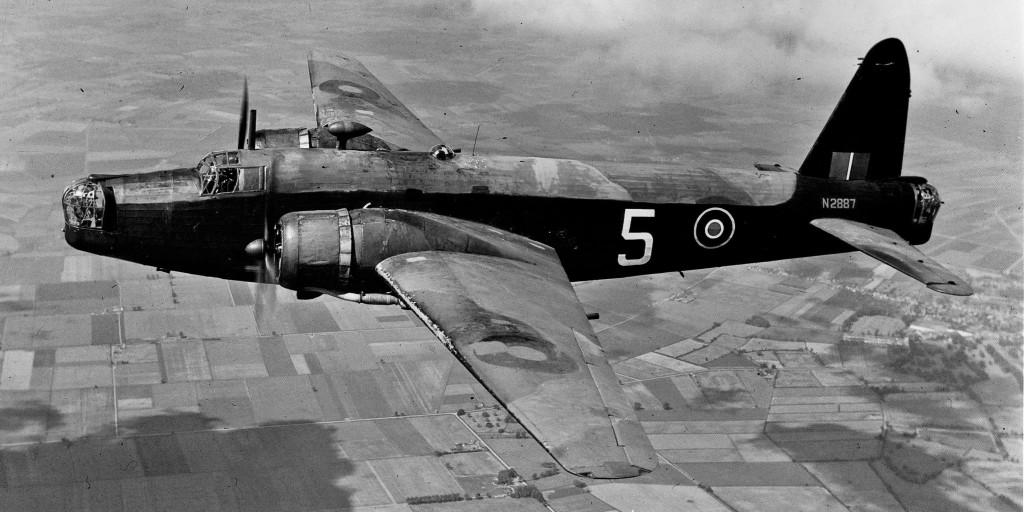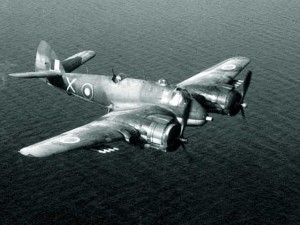Κείμενο: Γιώργος Καρέλας
Επιμέλεια ιστορικής τεκμηρίωσης : Μανώλης Μπαρδάνης
Στους κύκλους των αυτοδυτών της Πάτρας υπήρχε η φήμη ότι στο βυθό του Αντιρρίου στους πρόποδες του βουνού Παλιοβούνα βρίσκεται βυθισμένο ένα αεροπλάνο.
Η δική μου έρευνα είχε ήδη ξεκινήσει εδώ και πολλά χρόνια και η πρώτη αναγνωριστική κατάδυση πραγματοποιήθηκε από την ξηρά στη θέση Ρίζα μπροστά στις παιδικές κατασκηνώσεις . Η έρευνα στη θάλασσα δεν απέδωσε η ιστορική έρευνα όμως έδειξε ότι όντως ένα αεροπλάνο είχε πέσει φλεγόμενο στην περιοχή του Αντιρρίου.
Καθημερινή φύλλο της 7.4.1941 απόσπασμα που αναφέρεται η πτώση του Junkers 88
Στις 6 Απριλίου 1941 η Γερμανία κήρυξε τον πόλεμο σε Γιουγκοσλαβία και Ελλάδα και αμέσως επιτέθηκε.
Οι εφημερίδες της εποχής γράφουν ότι η Ελλάδα αμύνεται και πάλι δια του πάτριου εδάφους. Η Καθημερινή της 7ης Απριλίου φιλοξενεί το 163 Πολεμικό ανακοινωθέν του Γενικού Στρατηγείου όπου μεταξύ των άλλων Ελληνικών επιτυχιών αναφέρεται η πτώση ενός Γερμανικού βομβαρδιστικού στην περιοχή του Αντιρρίου.
Το σκάφος έπεσε φλεγόμενο και όπως αναφέρεται, δύο Γερμανοί αεροπόροι απανθρακώθηκαν.Την περίοδο αυτή η Ελληνική αεροπορία είχε τεθεί εκτός μάχης αφού τα λιγοστά πεπαλαιωμένα Ελληνικά αεροσκάφη που είχαν πολεμήσει ηρωικά είτε είχαν καταρριφθεί, είτε είχαν τεθεί εκτός μάχης λόγω βλαβών…
Λίγα Βρετανικά Spitfire είχαν αναλάβει την προσπάθεια αναχαίτισης της Γερμανικής προέλασης στην Ελλάδα.
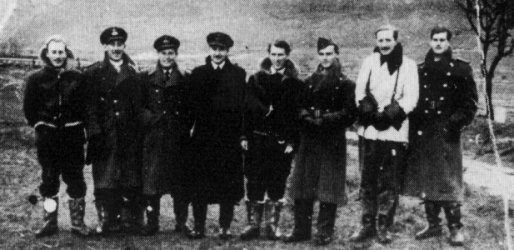
Ο υποσμηναγός Peter Townley Dowding τρίτος από αριστερά μαζί με άλλους πιλότους της μοίρας 80 κάπου στην Ελλάδα τους πρώτους μήνες του 1941.
Στις 15.00 απογευματινή της 6ης Απριλίου ο υποσμηναγός Peter Townley Dowding (Βρετανός άσσος του πολέμου με πολλές καταρρίψεις στο ενεργητικό του) ειδοποιήθηκε ότι Γερμανικά βομβαρδιστικά πλησίαζαν την Αθήνα. Όταν έφτασε κοντά σε αυτά τα κυνήγησε κατά μήκος του Κορινθιακού κόλπου και αντάλλαξε πυρά με τους πυροβολητές των βομβαρδιστικών. Το Hurricane του Dowding δέχθηκε κάποιες σφαίρες πριν κατορθώσει να καταρρίψει ένα βομβαρδιστικό που έπεσε στη θάλασσα κοντά στην Πάτρα (όπως αναφέρεται στη σελίδα http://surfcity.kund.dalnet.se/commonwealth_dowding.htm )και είχε σαν αποτέλεσμα τη σύλληψη του κυβερνήτη του βομβαρδιστικού Fritz Dreyer και δύο εκ των μελών του πληρώματος.
Βομβαρδιστικό αεροσκάφος Junkers 88
Το δεύτερο μέρος της έρευνας στη θάλασσα έγινε λίγα χρόνια αργότερα από την πρώτη απόπειρα, με τη βοήθεια φουσκωτού σκάφους. Έγιναν τρεις καταδύσεις σε μέρος που μου υποδείχθηκε από ψαροντουφεκά που είχε δει κομμάτια από αεροπλάνο σε μικρό βάθος μπροστά στην Παλιοβούνα. Αμέσως μετά την είσοδό μας στο νερό στην πρώτη μας κατάδυση πέσαμε απάνω σε μια έλικα αεροσκάφους στα 11 μέτρα. Υπήρχαν και κάποια κομμάτια από το κουβούκλιο του πιλοτηρίου τα οποία όταν τα ξανα-αναζητήσαμε δεν καταφέραμε να τα εντοπίσουμε. Στη συνέχεια ερευνήσαμε το βυθό σε βάθη 30-40 μέτρων, βάθος που σύμφωνα με τους «αυτόπτες» είχαν δει το αεροπλάνο. Συνήθως στις καταδύσεις αυτές ελάμβαναν μέρος τέσσερις αυτοδύτες ερευνώντας το βυθό σε παράλληλη διάταξη σε απόσταση που υπήρχε οπτική επαφή του ενός από τον άλλο (μέρες με καλή σχετικά ορατότητα) είτε απλώνοντας μίτο και κολυμπώντας επίσης παράλληλα (μέρες με κακή ορατότητα) . Οι έρευνές μας πάντως δεν απέδωσαν. Οι ψαράδες που πλησιάσαμε με το σκάφος και ρωτήσαμε είπαν ότι ναι μεν το αεροπλάνο έπεσε στη θάλασσα αλλά στη συνέχεια εκτινάχτηκε περί τα 400 μέτρα και κατέληξε φλεγόμενο στην ακτή, κοντά στις παιδικές κατασκηνώσεις. Αποφάσισα να πάω και να ρωτήσω πους ντόπιους κατοίκους της περιοχής και κατά προτίμηση να βρω κάποιον ηλικιωμένο. Τελικά οι ηλικιωμένοι βρέθηκαν και όλοι επιβεβαίωσαν όσα είχα ακούσει από τους ψαράδες. Το αεροπλάνο είχε πέσει στην ξηρά.
-
Αναφορές για αεροπλάνα που κατέπεσαν στον Πατραϊκό κόλπο κατά τη διάρκεια του Β Παγκοσμίου πολέμου
-Στις 2 Απριλίου 1941 Ιταλικό βομβαρδιστικό Cant του 106 Gruppo με κυβερνήτη τον Tenente Mario Bozzi χτυπήθηκε από το Hurricane του Βρετανού άσσου Vernon Woodward και κατέπεσε στην περιοχή Μεσολογγίου. Το πλήρωμα διασώθηκε χρησιμοποιώντας την πλαστική λέμβο του αεροσκάφους.
http://surfcity.kund.dalnet.se/commonwealth_woodward.htm http://www.aircrewremembered.com/Kracker/LuftwaffeAxisPilots.html-Γερμανικό αεροσκάφος Arado της 126ης σμηναρχίας ναυτικής υποστήριξης καταρρίφθηκε στον Πατραϊκό κόλπο στις 17 Σεπτεμβρίου 1943. Πιθανότατα έπεσε μετά από επίθεση του δέχθηκε από 2 Beaufighter της Raf της 227 Μοίρας με πληρώματα το πρώτο τον Καναδό υποσμηναγό Πέρσι Γκίν και τον σμηνία Τίμοθι Μπάρετ και το δεύτερο με πιλότο τον Καναδό υποσμηναγό Ντ. Άντερσον και τον υποσμηναγό Τ.Τίμονς.
Από το βιβλίο του Anthony Rogers Tο Ολίσθημα του Τσώρτσιλ εκδ. Ιωλκός σελ. 76 -Στις 5.10.1943 Γερμανικό Messerschmitt Bf-109κατέπεσε στον Πατραϊκό. Ο κυβερνήτης του υποσμηναγός Alfred Kluss σκοτώθηκε πηγή http://www.luftwaffe.be/miajg27.htmlΣτις 8 Οκτωβρίου 1943 ένα Αμερικανικό βομβαρδιστικό Michel B 25 της Νοτιοαφρικανικής 321ης μοίρας κατέπεσε στην περιοχή της Παναγοπούλας μετά από επιτυχημένο βομβαρδισμό στο αεροδρόμιο της Ελευσίνας. Ο κυβερνήτης του αεροπλάνου James Buckner Fisher διασώθηκε μετά την προσθαλάσσωση και αιχμαλωτίστηκε όντας τραυματίας. Μεταφέρθηκε σε στρατόπεδο συγκέντρωσης το Νοέμβριο του 1943 όπου παρέμεινε σχεδόν 2 χρόνια. Την κατάρριψη χρεώθηκε η διάσημη Γερμανική μοίρα Jagdgeschwader 27 που είχε βάση στην Τυνησία.
Συγκεκριμένα στη σελίδα http://www.cieldegloire.com/jg_027c.php αναφέρεται και το όνομα του Γερμανού πιλότου (Kurt Hoppe)
Ο κινητήρας του βομβαρδιστικού μπλέχτηκε στα δίχτυα μηχανότρατας το 2005 και ανελκύστηκε και πλέον βρίσκεται στο μουσείο της Πολεμικής μας αεροπορίας στο Τατόι.
Κατάφερα να επικοινωνήσω με τον γιο του κυβερνήτη James Fisher που κατοικεί σήμερα στο Colorado των ΗΠΑ όπου μου εξιστόρησε τα παραπάνω που επίσης έχει δημοσιεύσει στο διαδίκτυο. (www.merkki.com/guestbook2005page1.htm)
Παραθέτω επίσης τις καταθέσεις πιλότων βομβαρδιστικού του σμήνους που παρακολούθησαν την κατάρριψη και σχετικό σκίτσο. Οι πληροφορίες περιέχονται στις αρχειοθετημένες αναφορές για απώλειες πληρωμάτων και αεροσκαφών ( ΜΑCR) της USAAF με κωδικό αεροσκάφους 42-64675, της Αμερικανικής πολεμικής αεροπορίας. (αρχείο Μανώλη Μπαρδάνη)
- Eyewitness Accounts: Joyce, Bryan A., 2Lt, navigator, 448th BS 2nd Lieut. Bryan A. Joyce, 0-798814, navigator of the No. 2 plane (42-64668), 4th element of the 4th flight, commented as follows: “From the astrodome, I observed plane 42-64675, which was two elements in front of us, make a sharp turn of 180° and head back toward another B-25 which was falling behind and quickly losing altitude after an attack by enemy fighters. It seemed to me that Plane 675, in which Lt. Fisher was the pilot, slightly overshot his second 180° turn and when once again heading in the same direction we were, the plane was several hundred yards behind the damaged B-25 and was quickly gaining on him. Enemy fighters began to attack both of the planes behind the formation; the damaged B-25 went into the water and plane 675 pulled back up to rejoin our formation. His right engine was feathered and he continued to gain on us as we were only flying 150 mph. When we approached the narrows just before reaching Cape Avia, we were attacked by a fresh bunch of enemy fighters. Plane 675 had not quite reached our element and was the main prey for the aggressive fighters. The bomber began to lose altitude quickly and was forced to make a water landing with the fighters still attacking. There were splashes from bullets all around the bomber as the landing was made but none after the plane had stopped. The plane was still afloat when I last saw it. There was a slight haze and soon the plane could not be seen at all. I plotted the position where the plane landed in the water on my map.”
- Eyewitness Accounts: Morris, Raymond A., T/Sgt, engineer-gunner, 448th BS/Sgt. Raymond Morris, 34202342, the tail gunner in the No. 3 Plane (41-12926), 4th element of the 4th flight, said: “I saw plane 42-64675 pass by the tail of our plane going in the opposite direction. He was heading for the other B-25 that had fallen back after an attack on our formation by enemy fighters. Plane 675 went on slightly behind the damaged bomber and then made a 180° turn back in our direction. At this time, the enemy fighters began to attack both of the bombers behind the formation. I tried to cover both of the planes with my tail gun but they were out of range. I saw the other bomber hit the water and explode. I was busy with attacking fighters for a moment and when I again looked at plane 675, the right engine was feathered and it was closing the gap between us. Before he had a chance to rejoin us, the formation was again attacked by enemy fighters. Several of the fighters picked plane 675 for their target. Plane 675 began to lose altitude and went into the water. It appeared that a good landing was made as the plane did not burn or fall apart when hitting. As we pulled away, I could see the plane floating on the water but couldn’t watch it for long because of more fighter attacks on our element which kept me very busy. When I again looked at the water, we were too far away to see if the aircraft was yet floating.”
Την ίδια μέρα αναφέρεται και η κατάρριψη ενός Αμερικανικού LOCKHEED P-38 Lightning 6-8 χιλιόμετρα Βόρεια -Βορειοδυτικά του ακρωτηρίου Πάπας.
http://en.wikipedia.org/wiki/Lockheed_P-38_Lightning η αναφορά υπάρχει στη σελίδα http://www.cieldegloire.com/jg_027c.php
H κατάρριψη έγινε από τον Γερμανό άσσο Fritz Gromotka http://www.cieldegloire.com/001_gromotka_f.php
Ο Γερμανός πιλότος την ίδια μέρα κατέριψε και ένα ακόμα Αμερικανικό βομβαρδιστικό Β25 στον Κορινθιακό κόλπο.
Το κείμενο είναι αναδημοσίευση από το blog: O Άγνωστος Πατραϊκός



